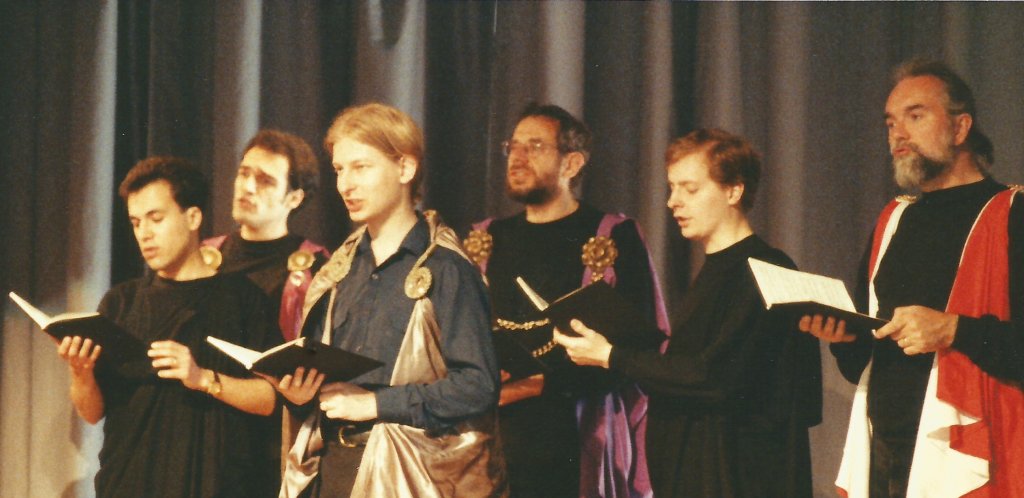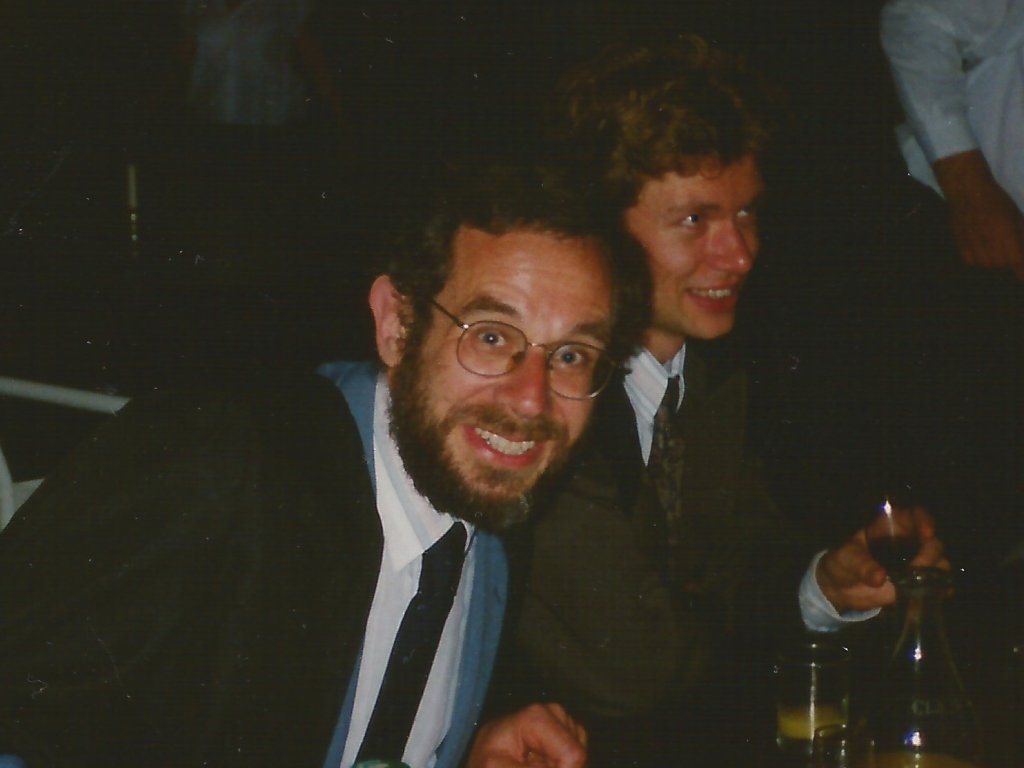Brian Moore and the Sound of Music
For many auditory researchers, music is cited as a strong motivator for first entering the field. Brian Moore is an excellent example. His undergraduate days at Cambridge spent playing in bands (along with, presumably, some studying) led to a lifelong fascination with guitars and other stringed instruments, as his impressive home collection attests. My entry into the world of auditory perception came through studying music and sound recording with an undergraduate research project spent at the BBC Research Department in Kingswood, Warren, running some perceptual evaluations of contenders for what would become the MP3 standard. I like to think it was the audio engineering background that gained me access to Brian's lab as a fresh new PhD student in 1992, rather than Brian’s pressing need for a new pianist in his jazz band. Either way, I am very grateful for his thoughtful, rigorous, and kind mentorship throughout my PhD time and ever since.
Trained in classical piano, I hadn't played much jazz before joining Brian's band, which may explain my concentrated and slightly nervous expression in the photo (Figure 1), taken at a garden party at Wolfson College in Cambridge, where Brian has now been a fellow for over 40 years. In addition to contributing his guitar talents to college events, Brian was also an active member of the Wolfson College Choir for many years, under the direction of Lynette Alcántara. The next photo (Figure 2) shows him in the chorus of a semi-staged production of Purcell’s Dido and Aeneas. I was the harpsichordist for that performance, as well as being the regular choir accompanist during my three years at Wolfson. Clearly, by the end of that time, Brian’s patience with amateurs at the keyboard had worn thin, as after I left, he endowed a very generous music scholarship at Wolfson to support future student accompanists for the choir.
Figure 1. Brian Moore’s jazz band providing the entertainment at a Cambridge garden party. Figure 2. Brian Moore (center back) lending his voice to the chorus in a performance of Purcell’s Dido and Aeneas.

Moving from musicians to their tools, Brian’s interest in musical instruments has also resulted in several interesting papers that are less well known to the audiological and psychoacoustic communities. Through a collaboration with Claudia Fritz and Cambridge colleagues Jim Woodhouse and Ian Cross, Brian was involved in studying the perception of player- and instrument-related properties of violin tones,7,8 aspects that had previously only been studied in terms of their physical acoustic properties. Most interestingly, Brian was also involved in an early study of how perceptually salient certain aspects of violin construction were,9 a study that eventually led to publications that came to the startling conclusion that professional violinists were not able to reliably identify, and did not prefer, famous 17th-century violins (including those of Stradivarius) over high-quality modern instruments.10,11
Brian, of course, has many other strings to his bow beyond psychoacoustics and music, not least of which is an extensive knowledge of wines, which he puts to good use as the current wine steward of Wolfson College. Some of my fondest memories of Cambridge are from the formal halls at Wolfson (Figure 3), and I am sure things have only improved since Brian was put in charge of supplying the libations. I have Brian to thank for encouraging me to enter the field of psychoacoustics, and for providing me with support and encouragement throughout my PhD time and beyond. No matter what your opinion regarding the general effects of musical training on perceptual and cognitive skills or educational attainment, in my case piano lessons certainly paid off.

Figure 3 Brian Moore and the author at a formal hall in Wolfson College, Cambridge, ca. 1993.
References
- Moore BCJ. Some experiments relating to the perception of pure tones: possible clinical applications. Sound 1972;6:73–79. https://doi.org/10.3109/00381797209075565
- Soderquist DR. Frequency analysis and the critical band. Psychonom Sci 1970;21:117–19. https://doi.org/10.3758/BF03335794
- Fine PA and Moore BCJ. Frequency analysis and musical ability. Music Percept 1993;11:39–53. https://doi.org/10.2307/40285598
- Oxenham AJ, Fligor BJ, Mason CR, and Kidd G, Jr. Informational masking and musical training. J Acoust Soc Am 2003;114:1543–49. https://doi.org/10.1121/1.1598197
- Bidelman GM, Nelms C, and Bhagat SP. Musical experience sharpens human cochlear tuning. Hear Res 2016;335:40–46. https://doi.org/10.1016/j.heares.2016.02.012
- Moore BCJ, Wan J, Varathanathan A, et al. No effect of musical training on frequency selectivity estimated using three methods. Trends Hear 2019; 23, 2331216519841980. https://doi.org/10.1177/2331216519841980
- Fritz C, Blackwell AF, Cross I, et al. Exploring violin sound quality: investigating English timbre descriptors and correlating resynthesized acoustical modifications with perceptual properties. J Acoust Soc Am 2012;131(1):783–94. https://doi.org/10.1121/1.3651790
- Fritz C, Woodhouse J, Cheng FP, et al. Perceptual studies of violin body damping and vibrato. J Acoust Soc Am 2010;127(1):513–24. https://doi.org/10.1121/1.3266684
- Fritz C, Cross I, Moore BCJ, and Woodhouse J. Perceptual thresholds for detecting modifications applied to the acoustical properties of a violin. J Acoust Soc Am 2007;122(6):3640–50. https://doi.org/10.1121/1.2799475
- Fritz C, Curtin J, Poitevineau J, et al. Soloist evaluations of six Old Italian and six new violins. Proc Natl Acad Sci U S A 2014;111(20):7224–29. https://doi.org/10.1073/pnas.1323367111
- Fritz C, Curtin J, Poitevineau J, et al. Player preferences among new and old violins. Proc Natl Acad Sci U S A 2012;109(3):760–63. https://doi.org/10.1073/pnas.1114999109

